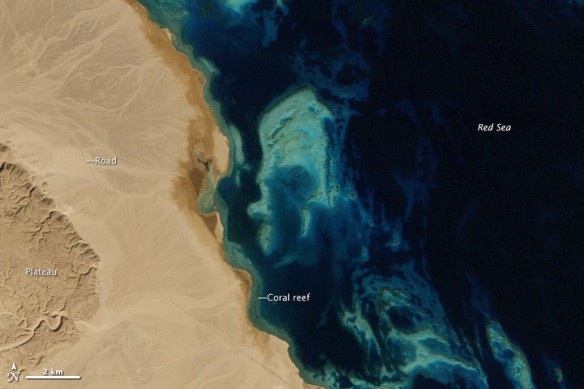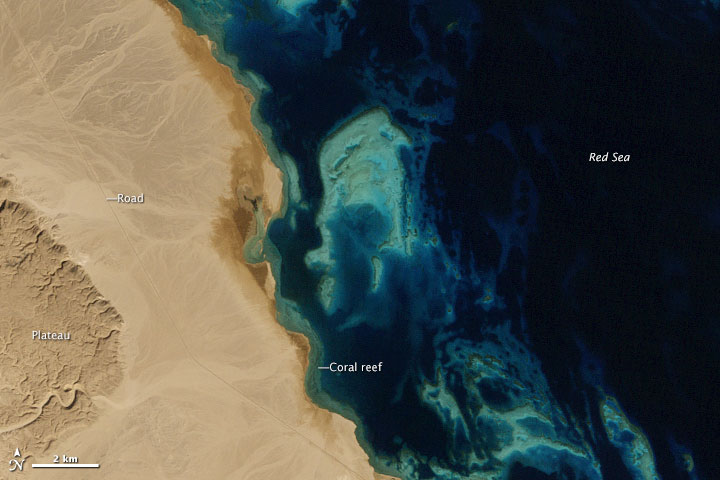
Red Sea coast, January 28th, 1985. NASA Earth Observatory images by Jesse Allen and Adam Voiland, using Landsat data from the U.S. Geological Survey.
By Adam Voiland, NASA / Earth Observatory;
In 1985, sand and coral dominated the Red Sea coast in an area about 30 kilometers (19 miles) northwest of Hurghada, Egypt. Aside from a lone road that ran along the coast, the desert landscape was largely untouched by human activity. Three decades later, development has radically reshaped the coastline.
The construction of El Gouna, a resort town, began in 1989. Building proceeded in waves, with a small cluster of summer holiday homes eventually morphing into a year-round community of about 23,000 people. As of 2015, El Gouna included 16 hotels, some 2,700 villas, 3 marinas, an 18-hole golf course, and hundreds of restaurants and shops.
Developers were not content to simply build on the existing landscape. To give seaside views and easy access to the water to as many El Gouna residents and guests as possible, builders dredged huge amounts of sand from coastal bays and inlets to sculpt the canals, marinas, hotels, and artificial islands of the resort.

Development at El Gouna, Red Sea coast. November 28th, 2014. NASA Earth Observatory images by Jesse Allen and Adam Voiland, using Landsat data from the U.S. Geological Survey.
The changes to the coast are evident in this pair of natural-color images acquired by sensors on Landsat satellites. The top image was captured by the Thematic Mapper (TM) on Landsat 5 in 1985; the bottom image was captured by the Operational Land Imager (OLI) on Landsat 8 in 2014.
While El Gouna has pledged to become a carbon neutral town, the resort has come with a cost for the local environment, particularly the coral reef ecosystems that make the area so appealing. Construction of coastal hotels and other infrastructure often involved the destruction of fringing reefs along the coastlines, caused by the dredging or dumping of large amounts of sediment.
While it is difficult to distinguish between reefs, underwater sand, sea grass, and algae in natural-color Landsat imagery, some scientists have used other wavelengths to track changes in corals near El Gouna and neighboring Hurghada. The findings indicate the reefs may be in trouble.
According to one study, corals near Hurghada have declined by as much as 50 percent over three decades.









